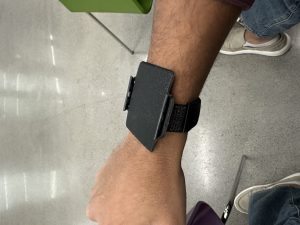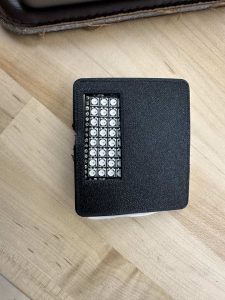1. What are the most significant risks that could jeopardize the success of the project? How are these risks being managed? What contingency plans are ready?
- Bluetooth Low Energy (BLE) Reliability: While BLE integration is functional, the reliability of the communication in different environments and during prolonged use needs further validation.
- User Feedback Integration: Noah implemented averaging over 3 seconds to stabilize emotional feedback, and Mason introduced a Kalman filter to reduce noise in model output.
- Demo Room Setup: Mason has tested the Jetson with Ethernet in the demo room and confirmed functionality. As a contingency, offline operation using pre-loaded models and configurations is ready.
2. Were any changes made to the existing design of the system? Why was this change necessary, what costs does the change incur, and how will these costs be mitigated going forward?
- Averaging for Emotion Feedback: Noah added a 3-second averaging mechanism to the model output to stabilize emotional transitions and reduce frequent buzzing in the bracelet.
- Kalman Filter Implementation: Mason integrated a Kalman filter into the system to reduce noise and unnecessary state transitions in the model’s output.
- BLE Integration via USB Dongle: Kapil and Mason discovered that the Jetson does not natively support Bluetooth, requiring the use of a USB Bluetooth adapter.



3. Provide an updated schedule if changes have occurred:
- The project is on track overall.
4. List all unit tests and overall system tests carried out for experimentation of the system. List any findings and design changes made from your analysis of test results and other data obtained from the experimentation.
Unit Tests:
- BLE Communication Testing (Kapil): Tested the latency and stability of BLE communication between the Jetson and the Adafruit Feather. Verified that latency is within acceptable limits and that commands are transmitted accurately.
- Haptic Feedback Regulation (Noah): Added averaging for emotional feedback, stabilizing the output and reducing frequent buzzing. Verified that emotional transitions occur only when the model is confident.
- Kalman Filter Integration (Mason): Tested the Kalman filter on the model’s output to reduce noise. Found that it significantly improved stability in feedback transitions but requires further tuning for video input.
Overall System Tests:
- User Testing: Conducted user tests with three participants to assess the usability and practicality of the system. Feedback was positive, noting that the system is intuitive and functional, with suggestions for minor improvements in feedback timing and UI clarity.
Findings and Design Changes:
- Feedback Stabilization: Averaging and Kalman filtering significantly improved feedback quality, reducing noise and unnecessary transitions. These features will remain in the final design.
- BLE Integration: The USB dongle resolved the Bluetooth issue, enabling seamless communication without major redesigns or delays.
